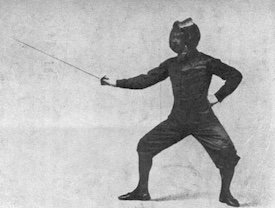I think this is the issue that audiophile marketers play on and therefore some/many audiophiles fall for: What do you/they mean by “conventional measurements”, the measurements used for published specs, the typical test routines of say an AP55, all the measurements of which an AP55 is capable or all the possible audio measurements? I can certainly buy the idea of audible differences with identical published specs, possibly even with the typical test routines of say an AP55 in pathological cases, but an audible difference that doesn’t show up in ANY measurement, including a Null Test, how’s that even possible?
I am not in marketing. I design the products for a living, and despise almost all marketing nonsense. You relay on this null test, which I have never seen work despite multiple attempts on analogue gear.
I’ve heard of rare situations where it was difficult to find the measurement type for a particular audible difference but not being able to measure an audible difference always ultimately comes down to the incompetence of the person attempting the measurement, albeit with mitigating circumstances on occasion.
Not it doesn't. You need to get involved in the design side. There are plenty of examples, and the people involved are not always incompetent. If they were you wouldn't spend so much money on their equipment.
An audible difference that cannot be measured is an audiophile myth. A myth that defies logic, because digital audio is itself a measurement. So if there were something that digital audio can’t measure, then it can’t be recorded or reproduced.
G
That last point is logical, but in the recording of the difference, if no difference is evident because it is swamped by the phase, amplitude and timing errors of the two devices, then it is moot. It is an unprovable proof.
Right, I should have stuck to that particular case and not generalize to any 2 DAPs. Even I have been troubled by phase or even overall time shifts between gears making inaudible differences look huge in a null test, so we end up with the reversed issue of measured difference we can’t easily judge in term of audibility. But would that be a problem here where you can just swap the casing on the same DAP, record a song twice and subtract them?
That would be interesting. The differences may be low enough to measure something. But none of us were there. Manufacturers rarely divulge all of their working, for obvious reasons.
Would not at least in the case of recorded sound everything audible be measurable since the act of recording is measuring sound in the recording space . So anything not measurable is infidelity
Same as Gregorio's point. But makes the same assumptions. That we can analyse ALL the differences on the recording.
Yes but as you say, that’s the opposite of the claim of audible differences that can’t be measured. BTW, have you tried DeltaWave? It seems very good at auto alignment when nulling two different recordings. Down to an accuracy of 1/1000th of a sample apparently.
...
As I understand it, TIM shouldn’t be an issue with any reasonably competent design and arises in response to a test signal that probably never exists in music recordings. In other words, it’s existence wasn’t known because it probably didn’t exist (in real world music/sound recording and reproduction)! It was discovered by accident about 50 years ago when someone cross wired an amp. I assume you are referring to the fact that TIM is not revealed in a typical THD measurement and before the 1970’s TIM was not specifically measured. However, although the TIM test/signal was not done before the 1970’s it was certainly “doable” and, a null test would reveal TIM (if present). This brings us back to: What is published as specs and what is typically measured as opposed to what can be measured. Obviously, if something isn’t typically measured, that does NOT mean it cannot be measured.
G
I have not heard of DeltaWave. I will look into it, as it looks interesting. How does it remove the phase differences and know they fully removed. What if the phase differences ARE the difference. Don't say we cannot hear them because i know we can. Group delay of 15uS or more between channels at high frequencies, and more than a few mS at low frequences when compared to midband is audible.
As to TIM test, it DID show up issues with designs. Amps were slow back then. Also, what null test was available back then. DeltaWave I suspect wasn't. It was what those teams I was describing was trying to do, and they failed. Some of them were smarter than average, before you insult them again.
BUT STILL we would have been able to reveal/measure it with a Null Test (which had been around for many decades before TIM was discovered)!
Where is this null test? I've over 30 years in the industry, and I have never seen it work, with the exception of the ones I mention, where they didn't really.
A null test will reveal any and all (“everything”) differences between 2 audio signals, regardless of whether we know what’s causing it or whether or not we have a way of measuring it in isolation.
Yes, but with the possible exception the DeltaWave you speak of, I have not seen a successful Null Test of analogue gear.
























